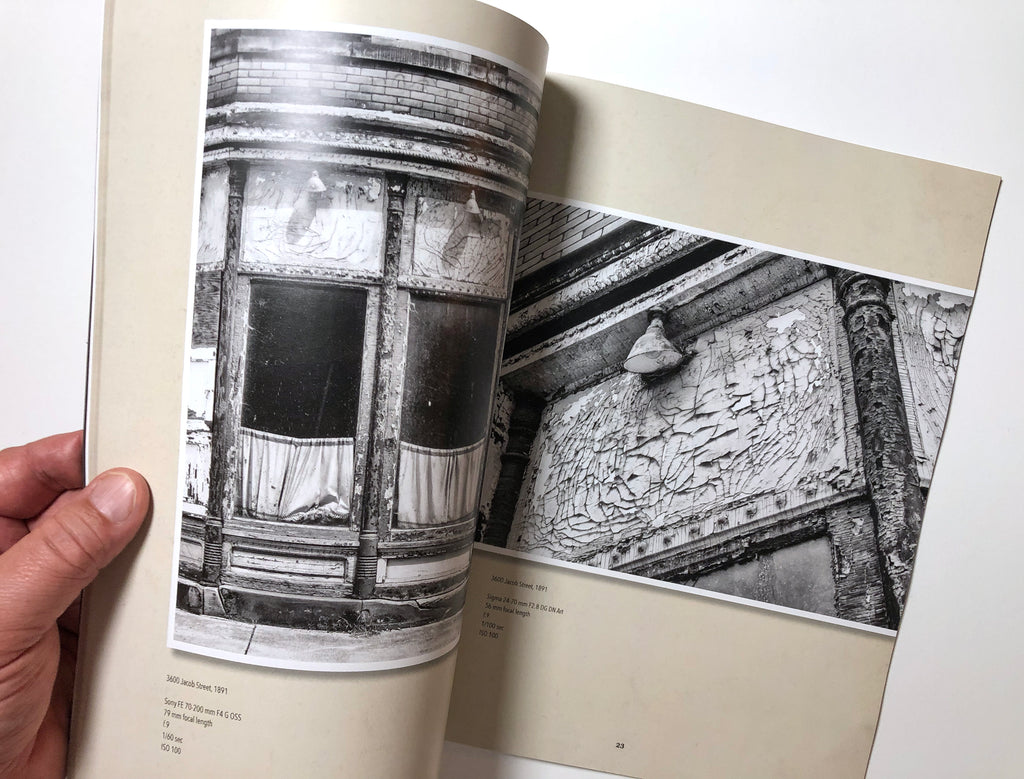
From the introduction to the book
In summer of 2021, I made a stop in the city of Wheeling, West Virginia — more specifically, South Wheeling. As I exited Highway 250 and entered the historic neighborhoods of South Wheeling, I felt my excitement begin to build. A familiar fever came over me—the burning urge to grab my camera and see (and photograph) everything.
One of my passions as a photographer is making images of abandoned or historic buildings that show the textures, character, and patina of time. For me, South Wheeling is a wonderland — a place seemingly unaltered by progress since the 1940s. That’s not true of course, but visually speaking, the city still exists in another time.
Sadly, I didn’t have a lot of time to spend in South Wheeling, but the time I had was well used. I made a lot of images. This portfolio includes my favorites from the day.
My promise to myself is that I will return to Wheeling soon, giving it the time it deserves, and visiting every fascinating corner.
Ultimately, this is a portfolio of images made in Wheeling. But anyone curious about my work can see many of those same images on my website, so why make a book? I wanted this publication to be more than a set of images. I wanted to give context to the photographs. I wanted to tell stories about the city and about the people who occupied these buildings. I wanted to describe my feelings of being there. I wanted to explain what prompted me to shoot these photographs.
For this publication, I’ve made a deep dive into the history of the buildings shown in the portfolio, and learned a little bit about the city that still wears its past in plain sight. I’m particularly indebted to a form housed on the website of the National Register of Historic Places, which describes in detail a large chunk of South Wheeling, and many of the buildings I photographed there.

About the cover
The cover was adapted from an 1884 fire map of Wheeling, West Virginia, created by the Sanborn Map and Publishing Co., Limited, of New York. The company published detailed and elaborately designed maps for the insurance industry from the mid-1800s until 1961. Fingerprints and smudges are part of the original scans made by the Library of Congress.

About the book
- Published November 2022
- 48 pages + cover
- Softcover
- 8.5 x 11 inches
- Perfect bound
- Beautifully printed on luster paper
Where to buy the book
Inside the United States:
Buy the book directly from Blurb (Click here) $18.95 plus shipping
Buy the printed book directly from Keith (Click here) $24.00 includes flat-rate shipping inside the U.S.
Download a digital PDF of the book (Click here) $4.99
Outside the United States:
Buy the book from Blurb (Click here) $18.95 USD plus shipping
Note: This book is not available on Amazon
Endangered buildings
Part of Keith's motivation for making photographs of abandoned and historic structures is to create a record of their existence. By their very nature, abandoned buildings are in danger of loss. After publication, we received news from a reader in Wheeling that two of the buildings featured in the book are scheduled for demolition. One of those buildings at 3606 Jacob Street is already being razed.
According to Wheeling's The Intelligencer newspaper, the historic Hobbs Brockunier house at 3530 Eoff Street (not featured in the book) was recently demolished. It had been bought at auction by an out-of-state investor and now the vacant lot is currently offered for sale at nearly ten times the auction price. Weelunk published a story about the old house with interior photographs.
The city of Wheeling has ramped up its demolition budget and intends to aggressively remove between 80 and 100 derelict buildings. This makes a return visit to Wheeling to shoot more structures urgent.
It's understandable that the city would seek to remove hazardous buildings, but this also erases visible signs of the city's history and changes the character of neighborhoods. The old sign-painting shop at 3606 Jacob Street that's now being demolished, was built by Charles Seybold in 1891.


Leave a comment